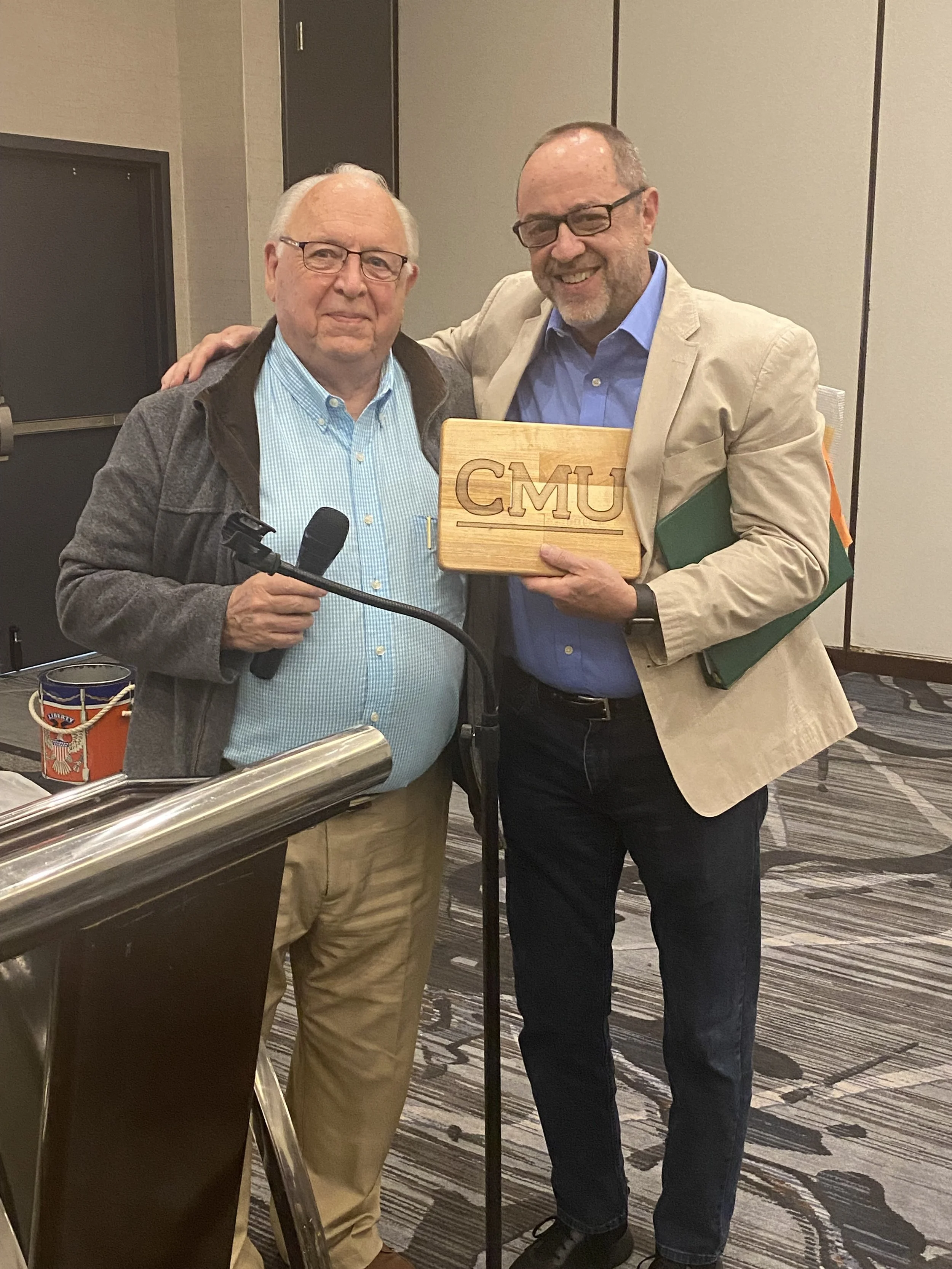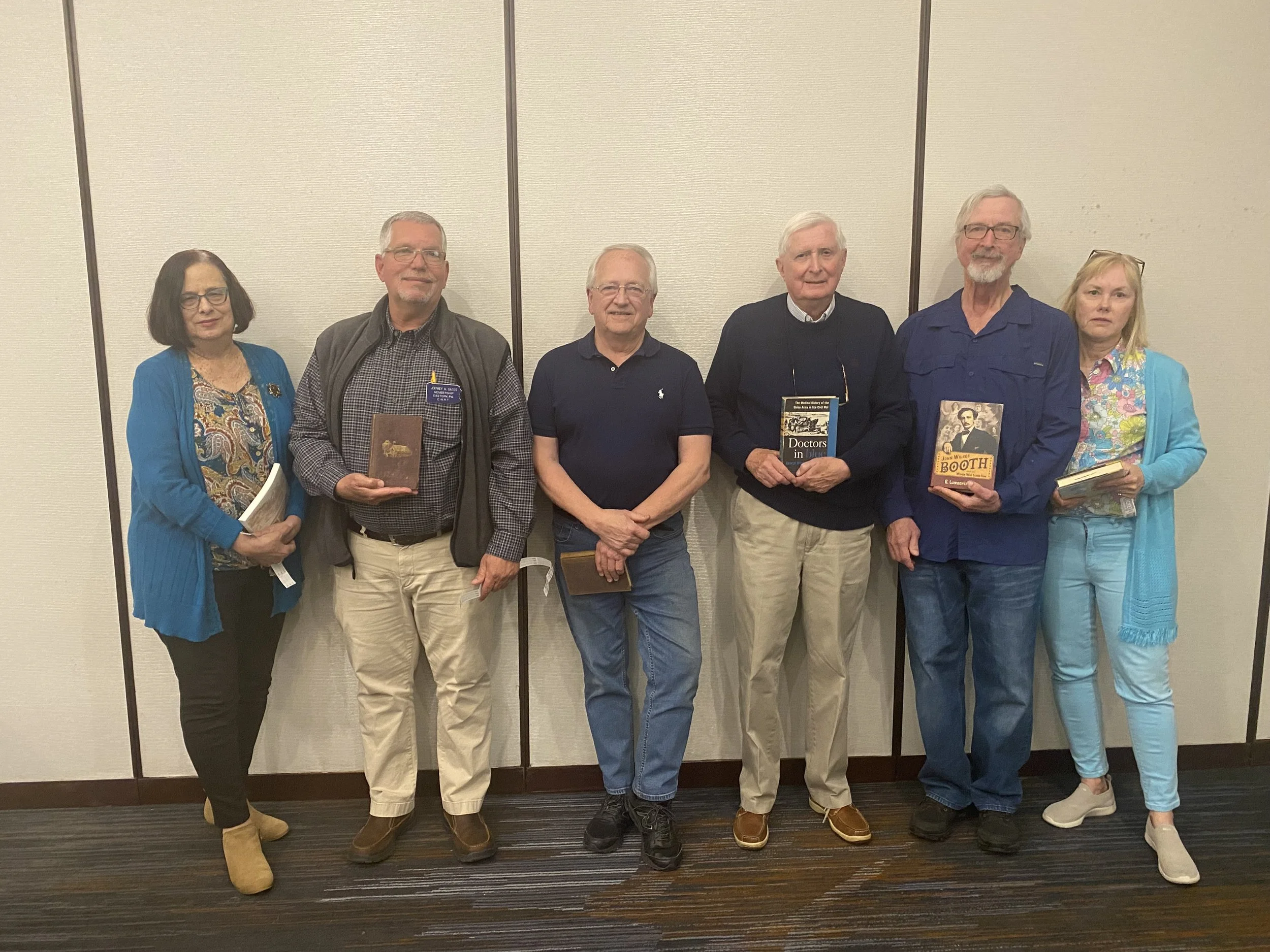History's Headlines: The King family of Massachusetts, Allentown, and Georgia
BY FRANK WHALEN - CWRT Board Member
July 29, 2023
On a muggy day in mid-July 1861, while the Union and Confederate armies were preparing to confront each other at the battle of Bull Run, a funeral procession wended its way down the streets of Allentown to what was then Union Cemetery, later Union West End Cemetery. At that time, the then eight-year-old burial ground still bore some resemblance to the community cow pasture it had been for many years. But now it was to be graced by an elegant tomb/monument, decorated with all the Victorian Romantic embellishments that the era most admired in funerary art with a boundary around it. For this was to be the last resting place of Henry King (1790-1861) an attorney, politician, and arguably the most prominent man in Allentown and among the most prominent men in Pennsylvania.
King’s home, in the then fashionable Italianate villa style, was located on the north side of Hamilton Street next to the Lehigh County Courthouse. He lived there with his wife, Mary L. King. They had one child, Henry Lord King, who died in infancy. At King’s passing it became the home of John Dodson Stiles (1822-1896) also an attorney, Lehigh County District Attorney, and lawmaker who represented Lehigh County in Congress and was a delegate to three Democratic conventions: 1856, 1864 and 1868. The Colonial Theater was erected there in the 1920s and an office building occupies the site today. The home was a community showplace that attracted figures of importance in state and national politics. Democratic candidates for the White House such as James Buchanan in 1856 found a consultation with Henry King was not to be overlooked.
When the 25-year-old King rode into Allentown in 1815, perhaps with law books in his saddlebags, he already had a lot of family history behind him. His parents were Daniel King and Hannah Lord. The elder King fought in the American Revolution and was a participant in the Battle of (CLICK HERE TO READ THE WHOLE ARTICLE)
June Meeting - Summary and Photos
TIL DEATH DO US PART: Jim and Gretchen Kennedy presented an interesting program on Victorian Death and Mourning Customs including some personal history. They even brought along a replica coffin and a display of morning objects.
Their program included: Victorian Mourning Customs, Victorian Mourning Jewelry and Stationery, Post-Mortem Photography, Dr. Thomas Holmes, the Father of Embalming, Early Embalming Equipment and Civil War Coffin, David John Kennedy, Private, 148 th PA, Company H
The Round Table also honored Tony Major upon his retirement from leadership.
The regular book raffle was held with proceeeds going the the Taylor Sword Project.
We also drew the names of the yearly preservation raffle winners.
Below are some photos from the evening.









History's Headlines: Daniel Prime: Easton's Man of Glory
from WFMZ’s History’s Headlines
by Frank Whalen - CWRT Board Member
June 3, 2023
It is 1921. In his inaugural address that March, newly elected President Warren G. Harding has promised “not nostrums but normalcy” to an American public exhausted in the aftermath of World War I and the Red Scare of 1919/20. In Tulsa, Oklahoma that June white supremacist mobs attacked the city’s Black neighborhood of Greenwood, burning schools, businesses and churches, leaving at least 100 dead.
That same year in Upper Nazareth, Pennsylvania in the early morning hours of July 18, a 78-year-old Black man- Daniel Prime of Easton- lie dying from a combination of diabetes and a stroke in Northampton County’s almshouse. Prime’s front-page obituary in the next day’s Easton Express suggests that he was a fixture in the river city and well regarded. “DEATH OF DANIEL PRIME; Well-Known Colored Man Was Civil War Veteran,” read the headline.
The Express noted that Prime was born in Easton in 1844, the son of Samuel (1811-1883) and Rachel Prime (1824-1902). Samuel was born in Easton to Daniel (1798-1849) and Mary Prime. Daniel Prime was apparently named after his grandfather. Daniel Prime’s wife Annie (Jefferson) Prime is listed in the 1870 and 1880 census as born in New Jersey and dying in 1900 in Niagara Falls, New York. According to the research of Susan Gothard, librarian at the Easton Public Library’s Marx History Room, the Primes had three children.
Prime’s sister, Mrs. Ellen Hubbard, lived at 116 North Green Street in Easton, and another sister, Mary Mebus, lived in Passaic, New Jersey. Other children of Samuel and Rachel Prime listed in the 1860 census were Emma, Virginia, Samuel P., William and Harriet. In 1921, according to the Express, one sister and granddaughter lived in Darby, Pennsylvania and a stepson, Marcus Prime, in Buffalo. Daniel Prime also had numerous nieces and nephews. This information, although it does not confirm it, suggests that Prime’s parents may have been free born and not enslaved Black people. Under Pennsylvania’s Gradual Emancipation Act of 1808 all enslaved people who were slaves that year would remain so till their deaths; their children born that year and thereafter when they reached the age of 28 would be free and their children would be free at birth. So, Daniel Prime, born in 1844, was born free, and not enslaved as some newspaper articles in 1921 later claimed. Some sources claim that Pennsylvania’s law was structured that way at the request of unmarried or widowed poorly paid ministers who felt they could not afford to hire domestic help but could own a slave to fill that role for their lifetimes. It is estimated that the last enslaved person in Pennsylvania died in 1847.
According to the obituary, after the Civil War Prime was employed at a stove store as a tinsmith by Charles W. Meeker. But the Express noted, Prime was also a “born cook” who worked at Harvey G. Seip’s café (a popular spot for local Republicans) and other restaurants around the city and was especially known for his clambakes. He eventually ran a successful catering business. Oysters were a specialty of the café and Prime’s fame spread into Pennsylvania and New Jersey, where he was “often in demand.” The Humane Fire Company No. 1 of Easton made Prime an honorary member, perhaps to ensure they would get his skills for a clambake first. Somewhere along the way in Easton Prime acquired the nickname of “Oakey.”
But perhaps the most interesting part of the obituary to readers today was the following paragraph:
“While working in Massachusetts as a barber during the Civil War he enlisted in a colored regiment and was distinguished by carrying a wounded soldier from his company from the field of battle. The officer died several years ago and remembered Prime in his will with a bequest of $500, but Mr. Prime never got the money.”
54th Massachusetts
The regiment of which Prime was a member was the 54th Massachusetts Colored, one of earliest regiments of its kind and commanded by Col. Robert Gould Shaw, a member of a prominent Boston family. Prime was part of the attack force on the Confederate Fort Wagner, a battery protecting Charleston harbor and the rebel- held Fort Sumter, on July 18th, 1863. Unlike many of his comrades he survived the battle. In 1989 the battle was made into a Hollywood film, Glory, whose stars included Matthew Broderick, Denzel Washington, and Morgan Freeman.
In 1897 Augustus “Gus” Saint-Gaudens, America’s leading sculptor, depicted Shaw leading the 54th in a bronze relief monument placed on Boston Common. At first the sculptor wanted to create an equestrian statue of Shaw alone, but Shaw’s family and others encouraged him to take a different approach. Saint-Gaudens’ depiction of the Black soldiers, notes the National Park Service, “was a revolutionary concept for the time period.”
Prime enlisted in the 54th Colored Regiment on April 21st, 1863, four months after Lincoln’s Emancipation Proclamation was issued. He was not alone. Black men from… CLICK HERE FOR COMPLETE STORY
Memorial Day - History is all around us!
History is all around us. All we have to do is look.
REMEMBER THEM THIS MEMORIAL DAY.













From the Brigade Commander ~ June 2023
As is our custom, our June meeting and lecture will be dedicated to honoring George Seligman, the man most responsible for what we all know today as the Civil War Round Table of Eastern Pa., Inc. Forty-five years later, Round Table members, their guests, and members of the broader Lehigh Valley community continue to enjoy learning opportunities about the American Civil War and working together to make a real difference in the fight to preserve battlefield acreage and artifacts. We owe an awful lot to George ... and to the many other Round Table members who have followed in his fearless footsteps.
While I’m on the subject of preservation, the Board will be convening in August to discuss which of the many deserving preservation efforts our Round Table will support using the funds it accumulated throughout Campaign 45.
One last thing: Don’t forget that we’ve got a field trip planned for mid-June; be sure to take a look inside the June newsletter on page 3 for details.
Bring Home Jonathan K. Taylor’s Sword
Jonathan Taylor was born in Carbon County, on the 21st of April, 1842. He and his family moved to Bethlehem in 1858. When war came on April 12, 1861, he was still a pupil.
Jonathan enlisted in Co. A, 1st PA Volunteers for 3 months as a private. The unit was mustered in at Harrisburg on April 20th, the day before his 19th birthday & only 8 days after the firing on Charleston’s Fort Sumter. Mustered out on July 27th, Jonathan Taylor came home.
By the summer of 1862 when President Abraham Lincoln called for more men, young Taylor was among the first to respond. His companions were many of the most gallant young men of Bethlehem. Civil War armies were very democratic and although young, he was brave, patriotic, earnest, and in every respect competent, and was elected to Captain of Company C, 129th Regiment PA Volunteers. As an officer he always enjoyed, not only the respect of his men, but also the confidence of his superiors. He was given a sword, a symbol of authority, to be carried in battle. It’s scabbard was inscribed, “Presented to Jon.thn K. Taylor by his Friends Bethlehem Pa” The regiment was mustered into the Union Army at Harrisburg on August 15.
On December 13, 1862, Taylor and his regiment were with the Army of the Potomac before Mayre’s Heights and participated in the carnage of the Battle of Fredericksburg. Federal forces hurled flesh and bone against fellow Americans behind a stone wall with a sunken road and when the bloody day was over and all assaults by the army had ultimately failed, the 129th had suffered 142 men killed, wounded or missing. One of those was young Taylor who we believe fell carrying his sword. Severely wounded, he suffered and fought one last battle, finally succumbing to his injuries 105 days later on March 28, 1863.
The train bearing his remains arrived in Bethlehem and was greeted by a city in mourning. Businesses were closed, children and adults lined the path to his home. His funeral took place from the residence of his parents on Wednesday, April 1st. All were saddened at the loss of this truly brave and patriotic young officer. As Captain Taylor, was a frequent visitor of the Moravian Church and agreeably to the desire of his bereaved parents, the Moravian cemetery was made his final resting place.
The Grand Army of the Republic was a Veterans organization formed in 1866. Posts were formed throughout the country by veterans who lived in that community. Many Posts were named for officers of high rank. Bethlehem’s Post 182 became the Jonathan K. Taylor Post. He was the only officer from Bethlehem to die from wounds in battle and it was altogether fitting and proper to honor his service, leadership and ultimate sacrifice. A monument for Post 182, is located in the Rose Garden across the street from Nitschmann Middle School.
A partnership of the GAR Civil War Museum of Philadelphia, Historic Bethlehem Museums & Sites, the Bethlehem Area School District & The Civil War Round Table of Eastern PA, Inc. has been formed to bring Jonathan’s sword home. Ownership will pass to the GAR Museum. We need $9000 to acquire to sword where it will be a focal part of a larger display at Bethlehem’s Nitschmann Middle School. Students from all over the district will learn of the local connection to the Civil War & have the opportunity for research projects that go deeper than normal classroom study.
Checks payable to: GAR Museum // In Memo line: “Taylor Sword Fund Donation”
Send to: Taylor Sword Fund c/o GAR Museum
8110 Frankford Ave Philadelphia, PA 19136
May Meeting ~ Summary and Photos
Ron Kirkwood returned to CWRT with a talk called “Women to the Rescue at the Battle of Gettysburg’s George Spangler Farm.”
He listed regiments with the most wounded being treated at the farm, and noted that the 153rd PA from Easton had third most wounded there.
He described how some women worked as nurses at the XI Corps hospital at the farm and listened to the dying men talk of their families, gave them water, treated their wounds, wrote letters home for them, held their hands and sang to them as they took their final breath.
He spoke of how others cooked and baked bread and washed filthy and bloody clothes and hospital linens.
In particular he signed out some women like Nurse Rebecca Lane Pennypacker Price and Mrs Hovvey wife of a hospital surgeon as examples of the dedication and sacrifice they made.
Kirkwood is the author of “Too Much for Human Endurance: The George Spangler Farm Hospitals and the Battle of Gettysburg,” which was published in June 2019. Two years ago, he was the tour guide of that farm during our CWRT field trip.
In an interesting highlight, CWRT member Gary Schnell presented Kirkwood with a CMU plaque in honor of their mutual connection to Central Michigan University.
Following his presentation he was presented with a check for the Gettysburg Foundation.
As usual, we held our book raffle for preservation, with the winners shown below.
From the Brigade Commander ~ May, 2023
The recent stretch of more seasonal spring weather has me in the mood to do some traveling. Lucky for me, it just so happens that we’ve got a group trip planned in mid-June to Monocacy Battlefield in Frederick, Maryland, and the nearby National Museum of Civil War Medicine. You’ll find the details on page 4 of the May Newsletter.
And although our group trip to Gettysburg won’t happen until October (see the May Newsletter on page 3 for details), we’ll be privileged, at our May 2nd meeting, to hear from a man who is no stranger to the CWRT of Eastern Pa. Retired writer Ron Kirkwood, now a Gettysburg Foundation guide, has spent years searching for facts, figures and other minutia about what took place during and after the battle at the George Spangler Farm, which served as a temporary XI Corps field hospital. Should be a good one. Hope you can make it. You’ll find more information on page 2 of the May Newsletter.
And while I’m on the subject of Gettysburg, don’t forget to check out the list of recently published articles on the home page of our website. There among others, you’ll find links to two stories that share news of increased accessibility on the Gettysburg Battlefield and summer open house dates for the home that served as Lee’s headquarters during the battle ... and more.
BARRY
May 2 Program Details Announced - “Women to the Rescue at the George Spangler Farm.”
Ron Kirkwood returns to the Civil War Round Table of Eastern Pennsylvania with a talk called “Women to the Rescue at the Battle of Gettysburg’s George Spangler Farm.” Some women worked as nurses at the XI Corps hospital and listened to the dying men talk of their families, gave them water, treated their wounds, wrote letters home for them, held their hands and sang to them as they took their final breath. Others cooked and baked bread and washed filthy and bloody clothes and hospital linens. Most of these women helped save lives, and every single one made a difference.
Ron Kirkwood is the author of “Too Much for Human Endurance: The George Spangler Farm Hospitals and the Battle of Gettysburg,” which was published in June 2019. The book is in its second paperback edition after its two hardcover editions and first paperback printing sold out. It also is available in audio and E-reader, and he is working on a sequel, which will be published in 2024.
Kirkwood is retired after a 40-year career as an editor and writer in newspapers and magazines including USA TODAY, where he edited national magazines for USA TODAY Sports and was National Football League editor for USA TODAY Sports Weekly. He also worked for newspapers in Baltimore, Harrisburg, York and Wilkes-Barre. He won numerous state, regional and national writing and editing awards during his career and managed the 32-person copy desk in Harrisburg when the newspaper won a Pulitzer Prize in 2012. Kirkwood is a Michigan native and graduate of Central Michigan University, where he has returned as guest speaker to journalism classes as part of the school’s Hearst Visiting Professionals series.
Kirkwood has been a Gettysburg Foundation guide at the George Spangler Farm Civil War Field Hospital Site since it opened in 2013. He lives in York with his wife of 46 years, Barbara.












